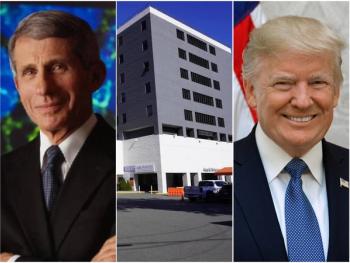
Children’s hospitals brace for overcrowding and staff cuts due to tax package
Pediatric hospitals treat a high volume of patients who are covered by Medicaid. Matt Cook, president of the Children’s Hospital Association, says Medicaid cuts will mean less resources to treat more patients.
At a typical children’s hospital, more than half of the patients are covered by Medicaid.
So the prospect of significant cuts to the Medicaid program poses grave concerns to pediatric hospitals.
"This is going to just fundamentally impact the healthcare system for children in this country," Cook says. (See part of our conversation in this video. The story continues below.)
The House of Representatives approved the tax and spending package Thursday, following
The tax bill is expected to lead to nearly 12 million Americans losing Medicaid coverage over the next decade. The package also cuts nearly $1 trillion in healthcare spending over the next 10 years,
It isn’t clear if there will be a significant number of kids that will lose Medicaid coverage, Cook says.
But pediatric hospitals are undoubtedly going to face greater financial pressures under the tax package. Even in the current environment, Cook says Medicaid programs don’t cover the full costs of care.
“Children’s hospitals still lose money on every Medicaid patient they treat,” Cook says.
‘Fewer nurses, fewer doctors’
Now, the financial environment figures to get more challenging. Children’s hospitals are likely going to have to cut staff as a result of reduced aid.
“We're absolutely going to have fewer healthcare workers because of this legislation, fewer nurses, fewer doctors,” Cook says. “It's going to exacerbate the workforce challenge that we already have in healthcare.”
“Hospitals won't be able to employ the same numbers, which means, at some point, then we're all going to have to look at our programs. And we're going to have to cut back on services, because we won't have the workforce to support those services. And that doesn't impact just the Medicaid kids. It impacts all kids. And so this is where this really becomes an issue for us,” he says.
If other hospitals have to scale back services, or even close their doors, then that will have an impact on pediatric hospitals. Children’s hospitals could see more patients in their emergency departments due to closures or reduced services at other facilities, Cook says.
“It’s going to exacerbate the ED crowding issue that we currently have,” Cook says. “So you'll see more people coming through the ED, waiting in the ED for a bed. The ED is not the appropriate place to keep anybody for any significant length of time. The ED is designed to provide emergency care, to stabilize and then to triage you to where you need to go. So I absolutely think we're going to see more patients in the ED.”
Plus, patients may need to wait longer to actually get a bed, and that’s problematic for patient care. It’s especially disturbing for pediatric patients in the emergency department with mental health needs, he says. Pediatric hospitals have seen
“We're still going to exacerbate that issue so patients who potentially may have gone somewhere else, to a rural hospital, or a hospital in a suburban or urban environment that is now closed, will just end up in our ED. And we'll just have more patients that we're not sure what to do with,” Cook says.
Rethinking services
Even before the unveiling of the tax package in Congress, children’s hospitals have had to adjust their strategies to prepare for less help from the federal government, Cook says. The National Institutes of Health
“We're gonna have to think about what we do with some of our services,” Cook says.
With the impact of the tax bill leading to reduced funding for hospitals, pediatric providers will have to delay addressing some critical needs, he says.
“For those hospitals that have 70% Medicaid (patients), they're living on the edge already, as it is. And so to the extent that they need to make capital investment in their facilities, I mean, this just makes that out of the question,” he says. “Now, it's not possible.”
Some states don’t have children’s hospitals. Pediatric health systems operate clinics in some states without children’s hospitals, but those services could be at risk with the loss of funding, Cook says.
“I think that's where you're going to start to see service cuts,” he says.
For pediatric hospitals losing funding in the tax package, and the prospect of other losses of federal aid due to changes coming from the Trump administration, Cook says he worries about the possibility of lasting damage to the healthcare system.
“It's hard to recover once you've done the damage,” he says.



































